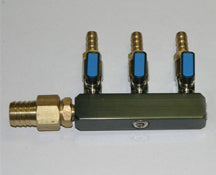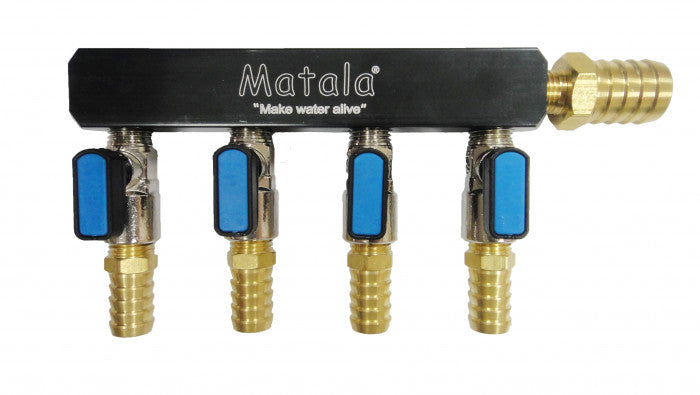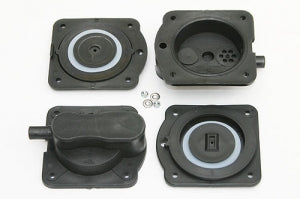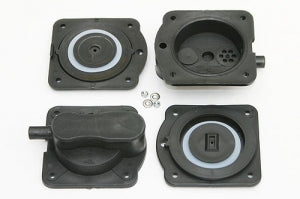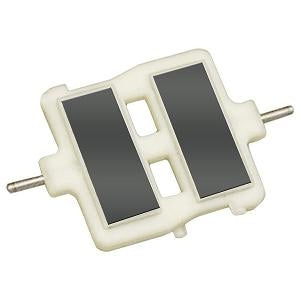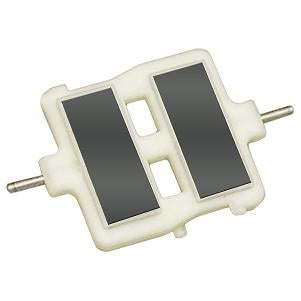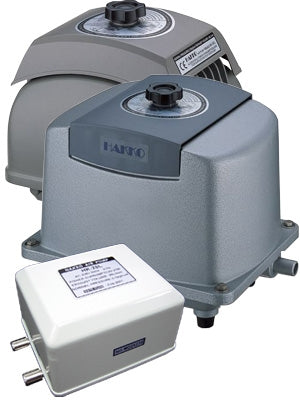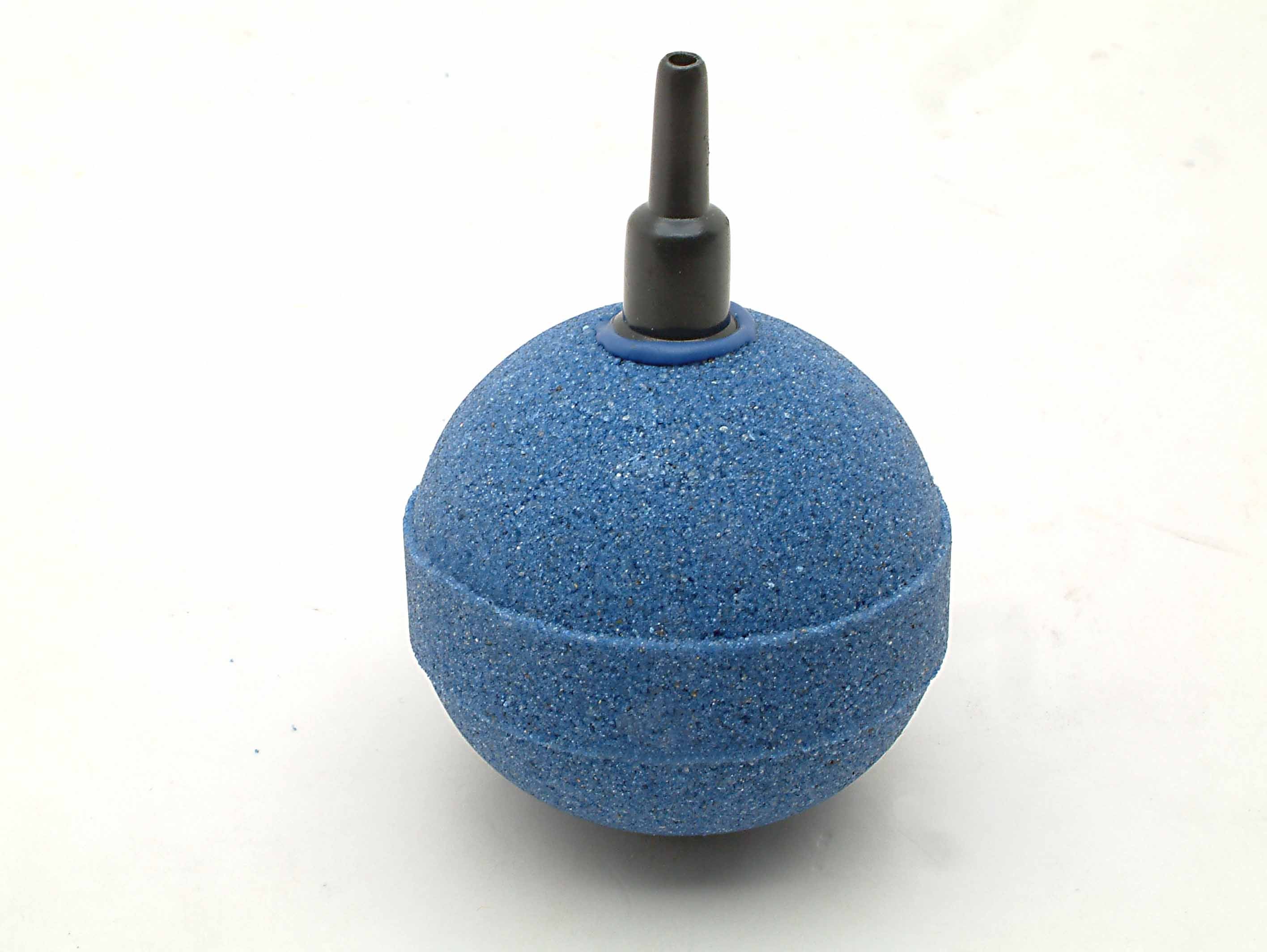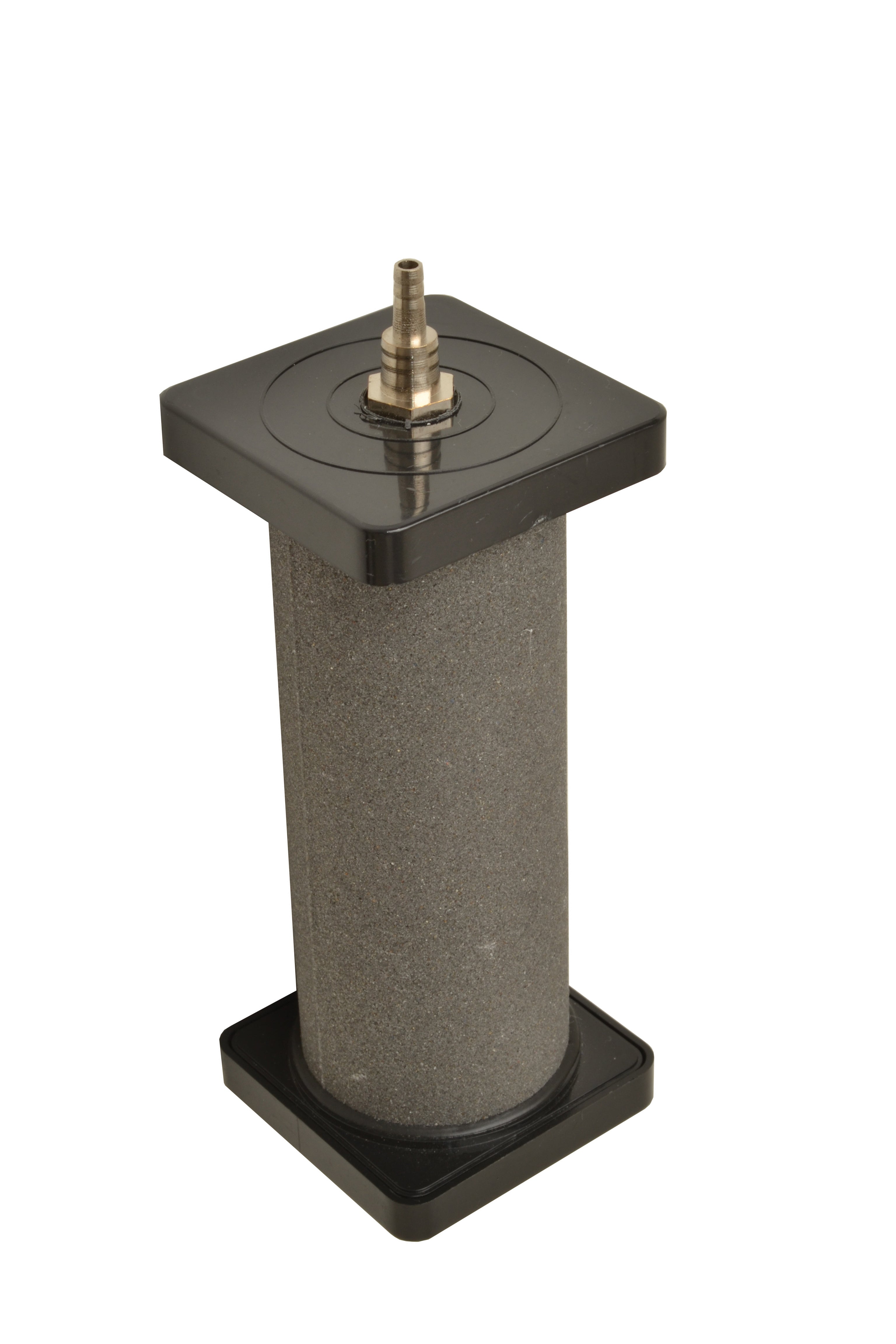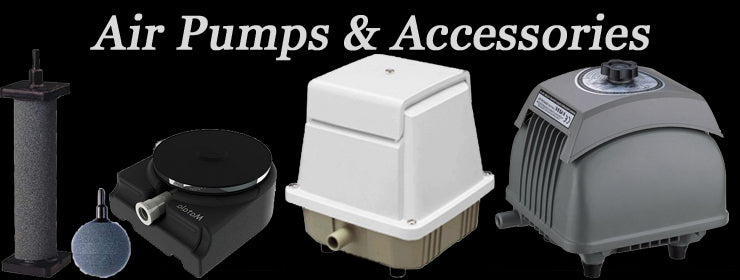
Air is very important to introduce into any pond, whether this is for a Koi Pond - or just a water garden. That is why it is important to have an air pump like a Medo or Hakko.
All living things need oxygen to live this of course includes Koi and also the bacteria that live in our biological filters.
USA Koi offers quality air supply products for your pond. By choosing a link above you will be guided through our selection of pond air pumps like Medo, Coralife, and supplies from air-stones to airline.
Aeration is vital to maintaining a healthy pond or water garden. You can accomplish proper aeration through the use of an aerator or air pump, or creating waterfalls and fountains. You pond will receive much more air with the addition of an air pump compared to a waterfall or fountains.
Where is the best place in a pond system to add air or oxygen?
Directly into the biofilter system as close as possible to where the bacteria are living. This is why vortex filters and Japanese Filter Matting work so well together in any serious filtration system .... but only by pumping volumes of air around the Japanese Filter Matting matrix.
So how much air do you need?
| Pond Volume in Gallons | 1000 | 2000 | 3000 | 4000 | 5000 | 6000 | 7000 | 8000 | 9000 | 10,000 |
|---|---|---|---|---|---|---|---|---|---|---|
| Liters of air/min required to maintain Dissolved Oxygen at Koi Safe Levels |
40 | 80 | 120 | 160 | 200 | 240 | 280 | 320 | 360 | 400 |
These numbers are intended as a guideline. Your application may vary according to stocking levels. (In general terms, 40lpm per 1000 gallons is a good rule of thumb.)
Oxygen in ponds comes from two sources--photosynthesis and diffusion from the air. The most important source, photosynthesis, is the process plants use for manufacturing food. In the presence of sunlight, plants (especially algae) add oxygen to water as a by-product of photosynthesis. At night, no oxygen is produced, but respiration of algae, fish and bacteria continues to remove oxygen from the water. Most of the time there is a desirable balance between how much oxygen is produced and how much is used, but under some conditions, the balance can be upset, and the oxygen concentration becomes low enough to stress or kill fish. The amount of oxygen in pond water can vary considerably from pond to pond and from hour to hour. Typically, oxygen concentrations are lowest at dawn and highest during late afternoon.
The amount of oxygen water can hold is dependent upon atmospheric pressure, salinity and temperature. Water will hold less oxygen in higher altitudes. Salinity is also a factor in oxygen levels and can easily be tested with a salinity meter or test kit. The most important factor is water temperature. As temperature increases, water can hold less oxygen. Most low oxygen problems occur from June through September. The reasons for this are:
- Water can hold less oxygen as it becomes warmer.
- Respiration rates of both plants and animals increase with the warmer water, so more oxygen is used.
- Summer's still, hazy or cloudy days may reduce the amount of oxygen produced.
- Large amounts of feed given to fish at this time of year result in large quantities of fish waste which create a higher demand for oxygen.

